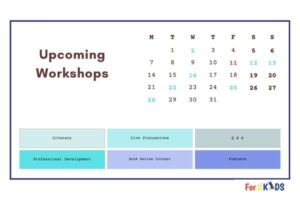Last week we talked briefly about fine motor skills and some considerations about accessing the services of a pediatric OT. In today’s podcast, we’ll look at what children need to know about the use of letters and letter sounds in writing.
What do young children need to know to develop good writing skills?
Firstly, they must understand that writing serves a purpose. For instance, the words in a shopping list tell us what we need to buy, the name on the notebook tells us whose book it is, and the classroom rules chart tells us the basic rules in the class. They may not be able to read all the words in this and other environmental print, but they know the purpose of the words. This is known as conceptual knowledge.
Secondly, children must know how to write. They must be able to form letters and understand the concept of the alphabetic principle. This is known as procedural knowledge. I’ll talk about the alphabetic principle in detail later.
And lastly, children must know how to put words together to form short phrases and sentences to express a complete thought. This is known as generative knowledge.
If we want children to enjoy writing, we must give them opportunities to write in meaningful ways.
What happens when children go to higher classes? It is not enough to write short sentences. Now, they must learn to organize their thoughts to present information coherently to serve the proper purpose. For instance, they must know the differences in how a persuasive essay is written compared to a letter or a story.
How do children get to that stage? Let’s go back to the conceptual knowledge.
When we ask young children to practice worksheets, they don’t feel motivated to write because they don’t see any purpose in repeatedly tracing or copying a line, letter, or word. We think practice makes perfect, and that is the purpose for us. But for the child, it is mindless repetition to sit and trace for an hour. If we want children to enjoy writing, we must give them opportunities to write in meaningful ways.
Next come procedural knowledge and the alphabetic principle.
I bet you were thinking, “What is this alphabetic principle? My child can identify and write the alphabet. The problem is that she just won’t write what I want her to write!”
Most LKG and UKG students know to write the alphabet because it’s been drilled into them, worksheet after worksheet. But to become writers, they must understand that the alphabets represent specific sounds and that letters are used in combinations to form words. This is known as the alphabetic principle. The alphabetic principle is common to both reading and writing. Once children understand this concept, they are ready to learn the fundamentals of phonics instruction. That, in turn, enables them to learn to read by putting sounds together. As they begin to write, they do the opposite—they take apart the sounds in a word, match them to the corresponding letters and write the letters.
When children haven’t had any experience putting their thoughts down, you can expect them to find writing in their own words difficult.
Have you heard children go “h-e-n=hen, h-e-n= hen” as they write the word ten times? Or listened to them say “h-e-n= hen, m-e-n= men, t-e-n=ten” to write the word families? Such exercises may help them memorize the spelling. It is possible to memorize 5 or 6 words at a time. But as children move up to higher classes, it is impossible to remember the spellings of all the words they will use, isn’t it?
That is why young children need plenty of opportunities to apply their growing knowledge of letter-sound relationships while reading and writing.
Sometimes, parents show me their kid’s workbook and say, “See how beautifully my daughter writes. She just doesn’t like to write.” When I dig deeper, they tell me that the child copied the sentences from the blackboard or from another book. Okay, handwriting is learning to form letters following a specific routine. It is not the same as composing or writing in your own words. Starting in LKG and UKG, our children are taught only to copy the teacher’s writing or from the book. Then suddenly, in class three, we expect them to write answers in their own words. Is it any wonder that they struggle? When children haven’t had any experience putting their thoughts down, you can expect them to find writing in their own words difficult. Sometimes, the difficulty can also be due to limited language skills. For children who are learning English, their vocabulary is limited, and so is their ability to spell.
Now that you have some information on the different aspects of early writing, where do you think your child needs support?
- Does your child understand the purpose of writing?
- Does your child know how to form the letters and use their knowledge of letter-sound relationships to spell words at their grade level?
- Can your child string words together to express ideas, comments, and questions?
In 2008, a panel of experts in literacy and early childhood education in America called the National Early Literacy Panel released a summary of their findings after analyzing nearly 500 research articles on the development of early literacy skills. Click here for the entire report. Amongst other results, the panel noted that early writing is one of the best predictors of children’s later reading success.
So if you want to work on your young child’s writing skills, you have very good reasons to do so. Considering that our schools emphasize worksheets, you have to do a balancing act—developing your child’s interest and ability without killing all the joy with worksheets. We’ll give you some ideas to do so. Come back next week for our episode on what parents can do at home to develop their children’s writing skills.





